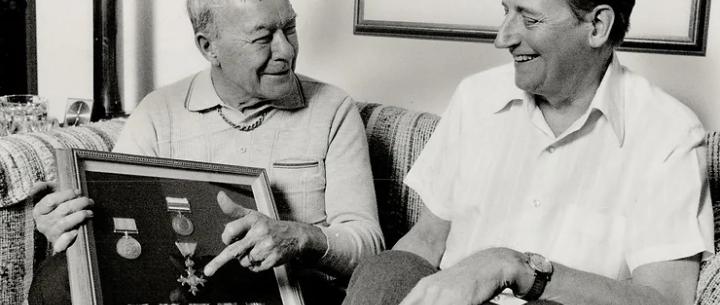The opening of the Ontario, Simcoe, and Huron Union Railroad Company (OSHR) line from Toronto north to Barrie in 1853 ushered in an age of economic prosperity in Downsview. Originally chartered in 1849 as the Toronto, Sarnia, and Lake Huron Railway, the company’s line was to run from Toronto to a point on the southerly shore of Lake Huron—passing through Barrie along the way.

In 1853 the company changed its name to the Ontario, Simcoe, and Huron Railroad Company (OSHR) which became known as the “Oats, Straw and Hay” line owing to its primary function moving agricultural freight as well as lumber. The inaugural 48 kilometre run between Toronto and Aurora on May 16, 1848 initiated steam train service in Ontario. By 1855, the railway extended its line to Collingwood on Georgian Bay thus providing the OSHR a northern terminus and ability to control navigation on Lake Simcoe through the purchase of steamers and wharves.
The railway saw several changes in name, mergers and owners over the years 1879 to 1919:
- 1858 – the Northern Railway Company of Canada (NRC)
- 1879 – the Northern and Northwestern Railway (NNR)
- 1887 – the Grand Trunk Railway (GTR)
- 1920 – the federal government took over management of the GTR
- 1923 – the line was absorbed into the government-owned
Canadian National Railway (CNR). - 1972 – CNR opens commuter service on the line
- 1978 – commuter service taken on by VIA Rail
- 1982 – GO Transit takes on commuter service
Metrolinx currently operates the line from Toronto to Barrie with stations at Union Station, Downsview Park, York University, Rutherford, Maple, King City, Aurora, Newmarket, East Gwillimbury, Bradford, Barrie South, and Allandale Waterfront.
More Stories

Downsview’s Queer Histories & The LGBT Purge
From the Two-Spirit Pow-Wows in Downsview Park, to the queer-positive roller derbies in the Downsview Supply Depot, to inclusion at Downsview United Church, today, 2SLGBTQI+ people are at home on the Downsview lands.

Life on the Downsview Base
The presence of the Canadian military in Downsview was evident in signage, fencing, and occasional truck and air traffic but for the most part, life inside the compound was pretty mysterious to outsiders. At its peak in the 1970s and 80s, approximately 3,000 military personnel and their families answered the call of duty at CFB Toronto.
